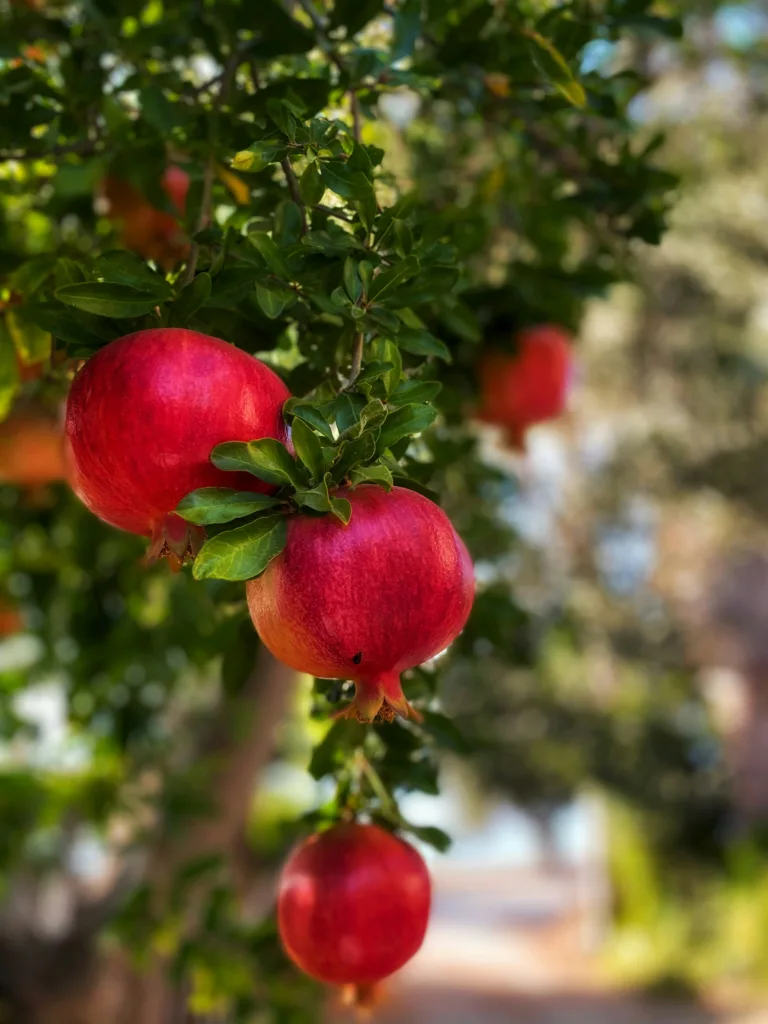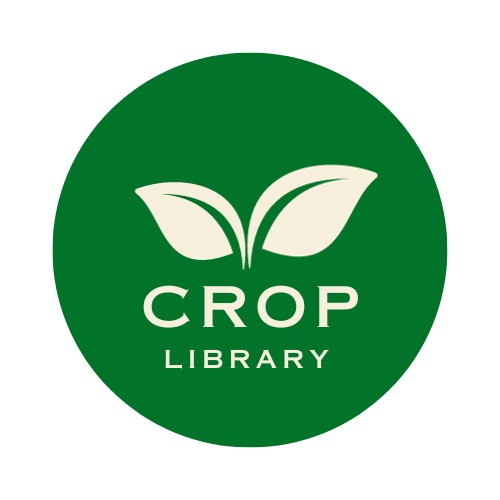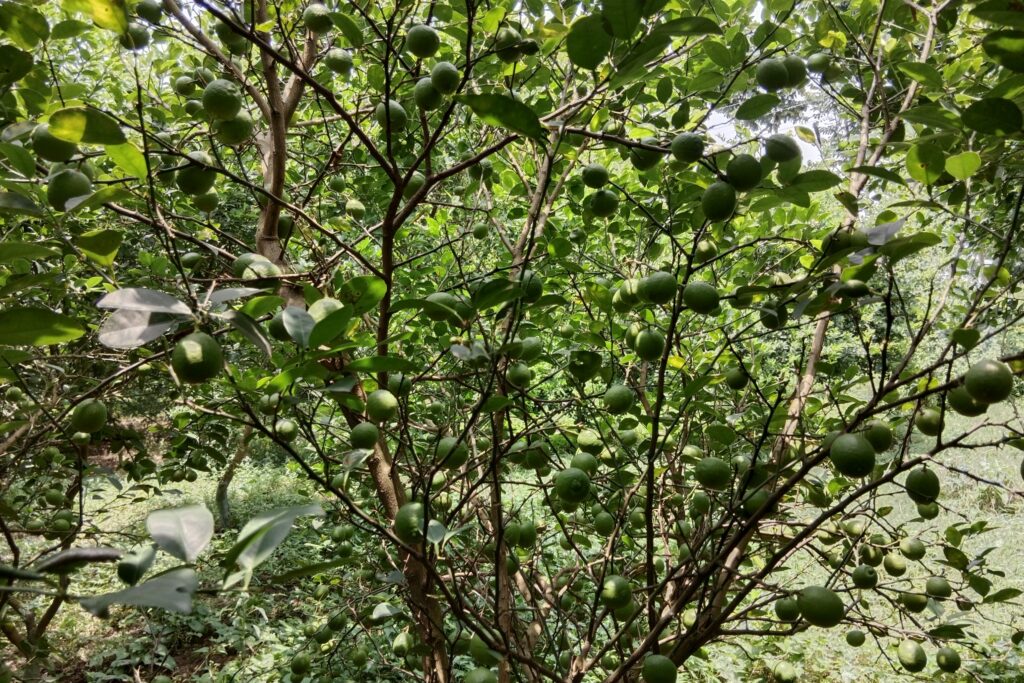Introduction
Pomegranates from the Punicaceae family are primarily grown in tropical and subtropical climates. These fruits are praised for having a high antioxidant content, which helps to explain why they are thought to be healthy food whether they are eaten raw or cooked.

As one of the most important fruit crops, pomegranates are enjoyed worldwide throughout the year. Unlike many plants that depend on annual fertilizer applications for growth and fruit production, pomegranates are not heavy feeders. They can thrive in soils low in organic material and tolerate conditions with some salt, sand, and drought. Remarkably, pomegranate trees can even bear fruit in challenging environments.
Avoid fertilizing your pomegranate trees during their first year. Beginning in the second year, you can feed them with organic plant food or an inorganic fertilizer like a slow-release shrub and tree type. Alternatively, you can use organic compost as mulch to nourish the trees.
Initially, water is the most crucial nutrient for young pomegranate trees, particularly during their first year after planting. For established trees, providing sufficient irrigation, especially during dry periods, is essential to enhance growth, fruit set, yield, and size.
Fertilizers are essential to fruit tree production because they affect vegetative growth, flowering, fruit set, and retention in the plant, which in turn affects fruit quality and yield. While macronutrients and micronutrients are normally absorbed from the soil by the roots, they can also be supplied directly to plants by foliar fertilization. This technique, which lessens the requirement for water and fertilizer inputs, is used more often in dry and semi-arid areas to correct micronutrient shortages. It has been demonstrated that foliar fertilization increases the number of metals in grains, improves nutritional status, and increases fruit set in tree crops. On the other hand, depending on the plant species and experimental settings, foliar fertilization’s efficiency varies greatly.
Throughout the growing season, plants consistently accumulate higher amounts of calcium (Ca) than any other nutrient, indicating a natural affinity for it, with most of the calcium being stored in the plant’s permanent structures. The uptake pattern of macronutrients was in the order of Ca > N > K > Mg > S >P.
The 9 best Fertilizers for Pomegranates.
The given recommended dose of fertilizer is for 8-year-old trees. You can increase the fertilizer amount by 10-15% for each year the plants are older and decrease it for each year the plants are younger.
Compost
Compost fertilizer improves soil fertility, boosts microbial activity, and increases the soil’s ability to retain water.
Apply compost at 25kg/ tree/ year or humic acid at 12.5 or 25g /tree/ year.
Nitrogen (N)
Nitrogen (N) fertilization influences plant growth, yield, and fruit quality, affecting pomegranate fruit, aril, and juice quality, as well as the total number of marketable fruits per tree. As a major nutritional element, nitrogen is essential for various physiological and developmental processes, including photosynthesis.
Most nitrogen uptake in fruit trees occurs during intensive vegetative growth and post-harvest phases. However, it is important not to overdo nitrogen applications, as excessive nitrogen can result in overly leafy plants at the expense of fruit production.
Application of N at 500 gms /tree /year.
Phosphorus (P)
Phosphorus is also an important plant macronutrient, with the highest uptake occurring from fruit development to fruit maturity.
Application of phosphorus at 500 gms /tree /year.
Potassium (K)
Potassium is crucial during the bud development and fruit-setting stages, and adequate fertilization is essential for maintaining high fruit quality.
One common symptom of potassium deficiency in pomegranate fruit is aril discoloration.
Recommended potassium application is 250 grams per plant per year.
Applying 11-16 kg/ha of potassium nitrate after blooming can promote larger fruit size and prevent fruit splitting.
Magnesium (Mg)
Magnesium improves fruit size and color increases sugar content, and promotes the formation of aroma compounds and acidity. Mg-deficient trees experience higher rates of premature fruit drops.
To correct Mg deficiency, soil application of MgSO4 or foliar application of Mg (NO3)2 at 4-6 gallons per acre is effective.
Zinc (Zn)
The application of zinc in pomegranate fruit trees increases the number of fruits per tree; the demand for micronutrients, particularly zinc, is highest during the fruit development stage.
It is recommended to apply at least 2 foliar applications of zinc.
Apply @ 636 mg Zn per tree.
Boron (B)
The requirements of Boron during the reproductive phase of development are high and play an essential role in fruit set and production. Furthermore, boron helps trees survive frost and reduces the stress caused by water shortage in plants.
Its absence may hinder calcium transport in trees, which may result in calcium shortage in fruits. Because it is specifically linked to fruit quality, boron is an essential micronutrient for the best possible development of fruit.
Applying boron increases leaf concentrations, improving tree nutrient status. Even a single foliar spray with a low amount, 34 mg per tree, boosts pomegranate fruit yield, primarily by increasing the number of fruits per tree, emphasizing the importance of boron in enhancing yield and quality.
Iron (Fe)
Foliar application of iron (Fe) in pomegranate increased yield, consistent with findings from a prior study where foliar Fe sprays during full bloom and approximately one month later significantly boosted yield.
Apply @ 2.6 mM FeSO4 / tree.
Calcium (Ca)
Calcium is essential for fruit firmness as it forms bonds in the middle lamellae and micro-fibrils of fruit tissue. It is mostly absent in the phloem and moves exclusively through the xylem in the fruit. Foliar calcium (Ca) application helps prevent fruit cracking and splitting.
What is the best time to apply fertilizer?
Pomegranate yields could be increased by using appropriate fertilizer treatment in divided dosages. Instead of administering the entire fertilizer dose at once, plants can more effectively use nutrients when fertilizer is applied in broken doses. To increase the number of fruits produced during certain months of the year, pomegranates should receive three equally divided doses of fertilizer applied to them:
March
Plants transition from their wintertime dormant phase to an active growing season in March. For most plants, including pomegranate trees, fertilization should be done in the spring, when growth is at its most vigorous.
Wintertime reduces sunlight for plants, which hinders photosynthesis and leaves them producing insufficient amounts of food for healthy growth and development. Plants thus go into dormancy. Pomegranate trees should not be fertilized in the winter since they are dormant and cannot effectively use nutrients.
May
This is the time of year when plants are actively growing and can appropriately use nutrients. The pomegranate plants that receive fertilizer application this month may receive additional support for the development of fruit. Fertilizer applied at this time of year makes pomegranate trees grow robustly and provide a bumper crop the following season.
September
It is advised to apply a third split application of fertilizer dose in September.
FAQs
Q1. How to pick a pomegranate?
Pomegranate fruit should be picked from trees when it is deep red and feels heavy, both signs of ripeness. Instead of pulling, use pruning shears or a sharp knife to cut the stem near to the fruit so as not to harm the tree or the fruit. Put on gloves to shield your hands from the rough skin of the fruit and any thorns on the tree. Before harvesting, check that every fruit is uniformly colored and hard. To avoid damage, handle the fruits gently and keep them in a cool, dry location. When harvesting, examine the tree frequently to ensure that ripe fruits are picked quickly.
Q2. How to tell if a pomegranate is ripe?
Look for the following things:
- Shape
Pomegranates at their ripest aren’t globular in shape. Look for angular, flattened sides as opposed to perfectly round spheres.
- Color
The hue of pomegranates ranges from pale to deep scarlet. The true markers of ripeness are the firmness and smoothness of its rough, leathery skin, regardless of color.
- Weight
A ripe pomegranate should feel weighty relative to its size, which is a sign of juicy, full seeds.
Q3. How to increase flowering in pomegranate?
Increase flowering in pomegranate with the following activities:
- Application of Plant Growth Regulator (PGR)
Application of plant growth regulator GA3 @ 75 ppm followed by 40 ppm NAA increase the number of flowers.
- Proper Pruning
Removing dead, diseased, and dried branches of trees also results in an increased number of flowers.
- Balanced fertilizer
Applying fertilizer rich in potassium and phosphorus during the crop’s bud development stage increases the number of flowers per plant.


